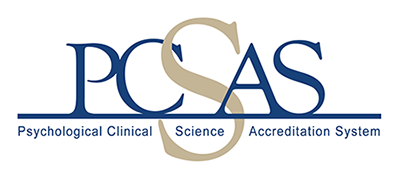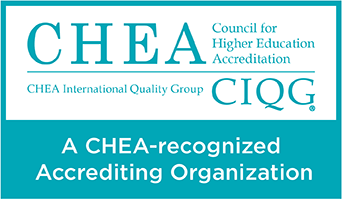By Samantha Nagy, M.A., University of Arizona
Modern communication methods such as email can make exchange of information easier and more convenient, but it can also blur the lines between work and personal time, particularly for graduate students. Laptops and smartphones are easily accessed in the bed, which can negatively impact sleep duration and quality (Lastella et al., 2020; Twenge et al., 2019). This, combined with the sometimes irregular work hours increasingly seen in academia, can lead to graduate students working or answering emails outside of a standard 9:00am to 5:00pm work day. Healthy sleep is difficult to define, but Buysse and colleagues (2014) suggest it includes sleep that is of adequate duration, at the appropriate time in one’s circadian rhythm, provides mental and physical restoration, and is satisfactory. Without clear delineation between work and off time, these criteria may be harder to achieve. Beyond improvements in productivity, all graduate students and trainees deserve restful and restorative sleep to improve the quality of their lives.
It is probably unsurprising to many that graduate students face multiple sources of stress (financial, work demands, isolation) and challenges to their quality of life (Yusuf et al., 2022). A significant portion (70%) of PhD students reported moderate to severe burnout (Evans et al., 2018). High levels of workplace stress have also been associated with presenteeism, or being physically present at work due to pressure from managers and/or the institution, but not being fully focused on or engaged in the work (Johns, 2010; Matsushita et al., 2011). A common antecedent of presenteeism, in addition to chronic stress, are sleep problems (Furuichi et al., 2020; Guertler et al., 2015; Knudsen et al., 2007). Job stress, psychological and physiological stress responses, and sleep disturbance have detrimental effects on job performance (Furuichi et al., 2020). Research suggests that positive relationships (i.e., social support) with mentors and peers are associated with higher levels of subjective well-being and lower levels of presenteeism (Furuichi et al., 2020; Yusuf et al., 2022).
Using this information, how can we leverage boundaries and relationships to protect sleep in service of students’ sleep and well-being? Below are a few tips, based on my own observations, to guide both trainees and mentors.
For Trainees:
- Ask for explicit expectations from your mentor. A written mentorship contract can help keep both parties accountable and outline clear expectations and methods of communication. Set processes for feedback that can flow both ways. [For templates and examples from Oregon State University, see here: https://academicaffairs.oregonstate.edu/research/creating-mentoring-agreement]
- Make space in your life for sleep to serve you. Dedicate your bed as a refuge for sleep and avoid doing other things in the bed that may muddy your brain’s association. Follow the Five Principles of Good Sleep Health: Value, Prioritize, Personalize, Trust, and Protect [see more here: https://www.betterspace.uk/blog/are-you-getting-enough-sleep] (Espie, 2022).
- Most importantly, lean into the discomfort of stepping away. If emergency procedures for patients/clients are established and everyone’s safety is considered, very little that happens in academia is a life-or-death situation. The temporary discomfort of maintaining a boundary is in service of your future well-being. [See more here: https://phdonewhatnext.com/all-posts/boundaries]
For Mentors:
- Set realistic and clear expectations for your trainees. Strive to be explicit, consistent, and respectful when communicating these expectations. Define “working hours” and reasonable response times, as well as “in case of emergency” procedures.
- Consider including specific language into your email text or signature that communicates your expectations. For example, a faculty member that I have worked with includes the statement “I am sending this email at a time that is convenient to me. Please respond at a time that is convenient for you,” if they send the email in the middle of the night. This can be useful if you are a habitual after-hours emailer.
- Examine your own work-life balance and check in with yourself when you check in with your students. Hold compassion for the struggle, and instill strong self-management skills early in your trainees’ careers.
Graduate and professional careers often ask a lot of us, including the finite resource of our time. Without intentional prioritization, sleep can often be perceived as time that could be used for other activities. Prioritizing sleep with well-maintained boundaries is an investment in your future that is worth making.
References
Buysse, D. J. (2014). Sleep health: can we define it? Does it matter? Sleep, 37(1), 9-17.
Espie, C. A. (2022). The ‘5 principles’ of good sleep health. Journal of Sleep Research, 31(3), e13502.
Evans, T. M., Bira, L., Gastelum, J. B., Weiss, L. T., & Vanderford, N. L. (2018). Stress & Burnout in Graduate Students: The Role of Work‐Life Balance and Mentoring Relationships. The FASEB Journal, 32, 535.527-535.527.
Furuichi, W., Shimura, A., Miyama, H., Seki, T., Ono, K., Masuya, J., & Inoue, T. (2020). Effects of job stressors, stress response, and sleep disturbance on presenteeism in office workers. Neuropsychiatric disease and treatment, 1827-1833.
Guertler, D., Vandelanotte, C., Short, C., Alley, S., Schoeppe, S., & Duncan, M. J. (2015). The association between physical activity, sitting time, sleep duration, and sleep quality as correlates of presenteeism. Journal of occupational and environmental medicine, 57(3), 321.
Johns, G. (2010). Presenteeism in the workplace: A review and research agenda. Journal of organizational behavior, 31(4), 519-542.
Knudsen, H. K., Ducharme, L. J., & Roman, P. M. (2007). Job stress and poor sleep quality: data from an American sample of full-time workers. Social science & medicine, 64(10), 1997-2007.
Lastella, M., Rigney, G., Browne, M., & Sargent, C. (2020). Electronic device use in bed reduces sleep duration and quality in adults. Sleep and Biological Rhythms, 18, 121-129.
Matsushita, M., Adachi, H., Arakida, M., Namura, I., Takahashi, Y., Miyata, M., Kumano-go, T., Yamamura, S., Shigedo, Y., & Suganuma, N. (2011). Presenteeism in college students: reliability and validity of the Presenteeism Scale for Students. Quality of Life Research, 20, 439-446.
Twenge, J. M., Hisler, G. C., & Krizan, Z. (2019). Associations between screen time and sleep duration are primarily driven by portable electronic devices: Evidence from a population-based study of US children ages 0–17. Sleep medicine, 56, 211-218. Yusuf, J.-E. W., Saitgalina, M., & Chapman, D. W. (2022). Work-life balance and well-being of graduate students. In Work-Life Balance in Higher Education (pp. 63-88). Routledge.


